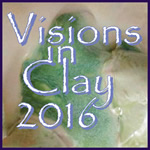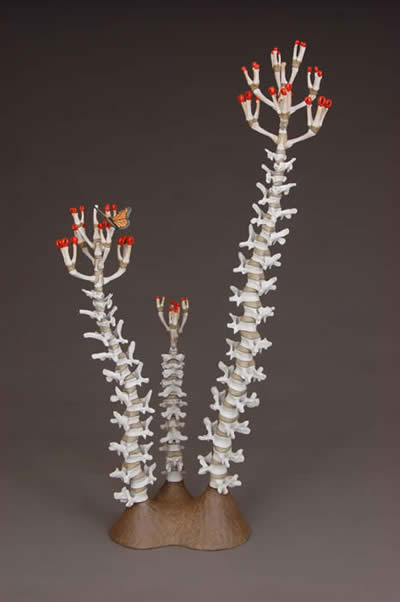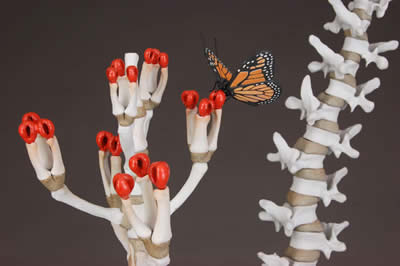
Elaine Quave
Artist Website Link

Hominid Asclepias Specimen 3
cone 6 reduction slip cast porcelain, colored porcelain, and handbuilt stoneware (base), cone 04 glaze fired earthenware (flower buds), cone 6 oxidation black porcelain and terra sigillata (monarch), steel
36" x 18" x 18"
2016
$4,800
The human lens through which we experience the world is an inescapable circumstance. Though our bodies are of the animal realm, we perceive our minds as not, resulting in an irresolvable conflict that epitomizes the human condition. I am fascinated with the human body with a specific interest in how foreign it can seem. Although we can come to a knowledgeable understanding of individual systems and entities, in our attempt to conceptually put them back together there is a fracturing effect. In my art work I pose questions about how well we really understand ourselves and our place in the world. There seems to be nothing that hasn’t been touched by humanity, even the wilderness and that which we leave feels gardened. I want to lead the viewer to a place where the reflection of our selves can have a terrifying beauty and an ethereal sensation.

Work Statement — Contextual Reference
This series “Hominid Asclepias” is about our relationship with the monarch butterfly. The title refers to how our presence has become a prominent force in shaping the natural world around us. Hominid is the family name for erect bipedal primates including recent humans. The use of the scientific term hominid references our past and our present and calls us to look upon the history of mankind. It has only been in very recent years in our history that populations have exploded and we have ravaged our natural resources in an unprecedented manner. We are beginning to understand that our rate of consumption is unsustainable. Ascelpias is a genus of plants that includes 140 species of milkweed. Milkweed is the only food source of the monarch caterpillar, a species undoubtedly in distress because of us.
The monarch is not considered an endangered species yet, as they live elsewhere in the world, however their migration in North America is considered an endangered biological phenomena. They migrate towards Canada for the summer and, four generations of monarchs later, they return to the same forest in Mexico where their ancestors over-wintered the year before. There are 4 generations of monarchs in a year. The monarchs that leave mexico are not the same ones that return. It's amazing they somehow know where to go.
Although I believe we should continue to try to help the monarch butterfly informed with as much knowledge as possible; I’m keenly aware of the idea that we are attempting to curate the species around us. Who are we to decide what species should survive? And, what other species are quietly disappearing in our wake? Ultimately I believe our fate is linked to the natural world around us and that we must learn to live more harmoniously within this world if we are to survive as a species.